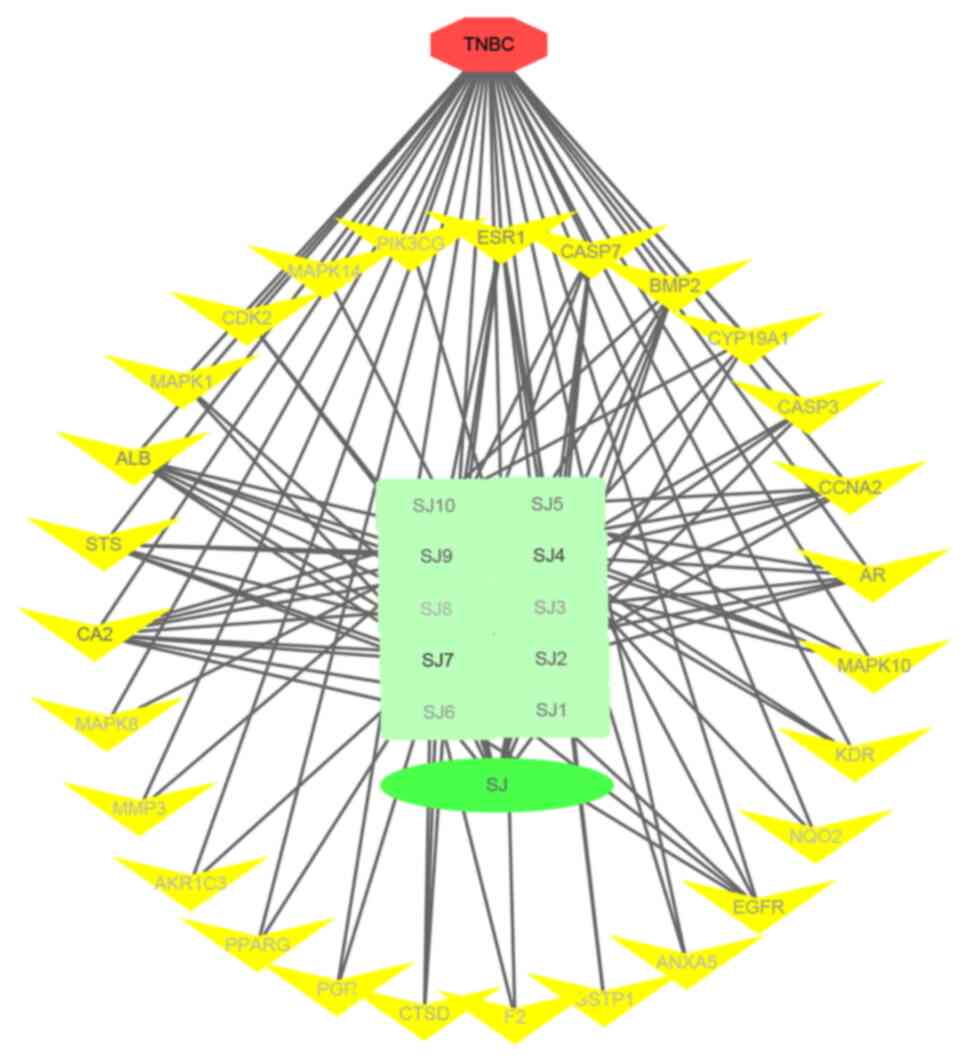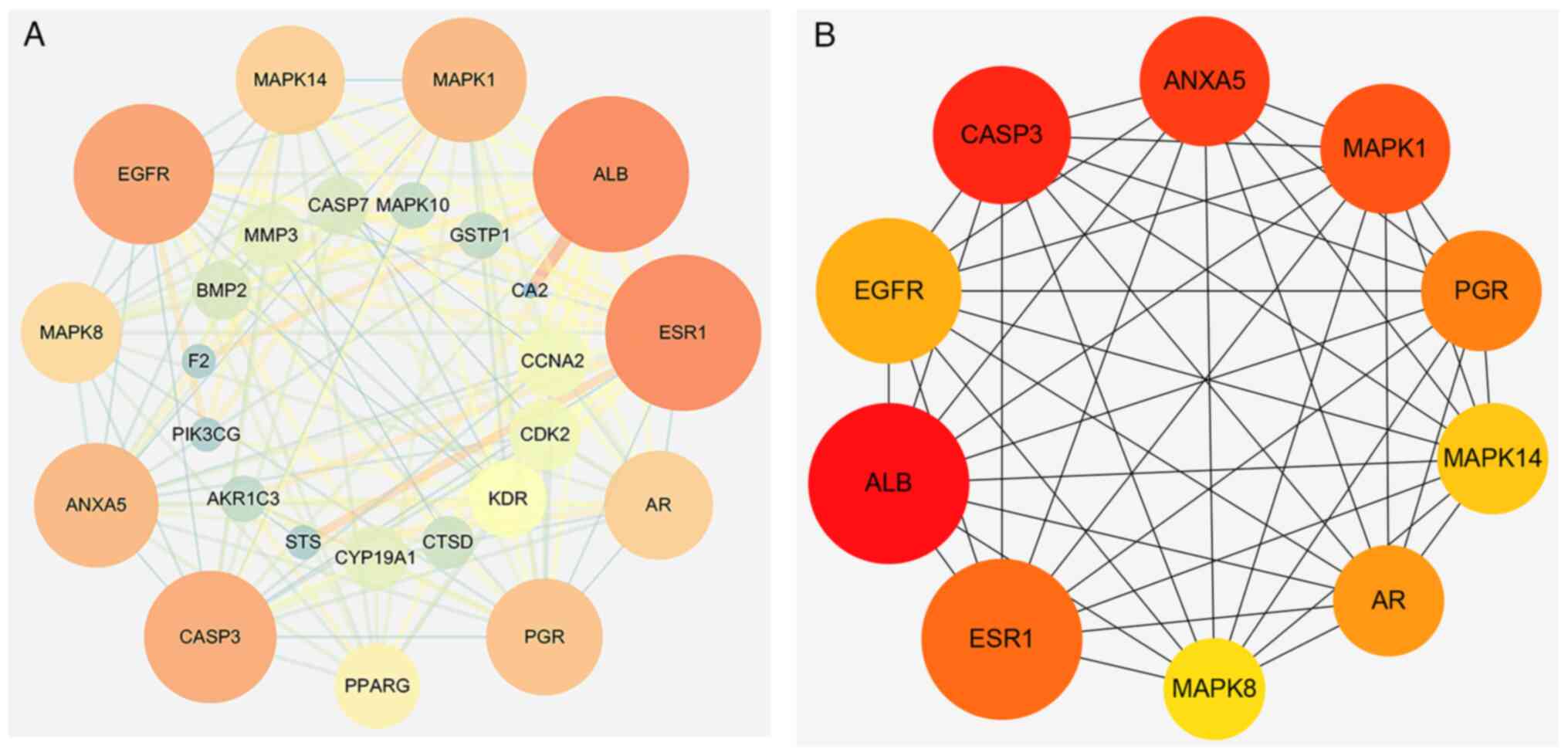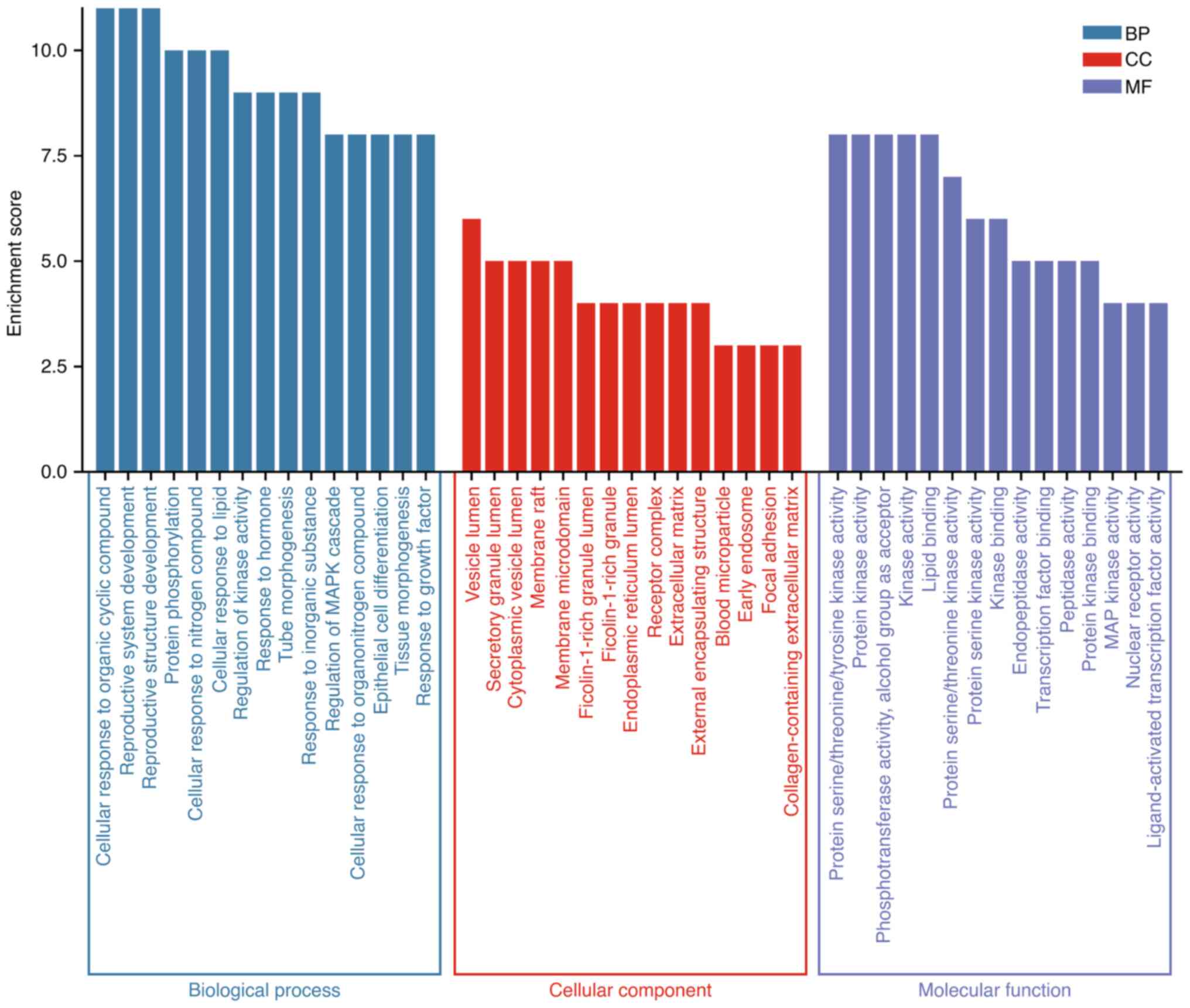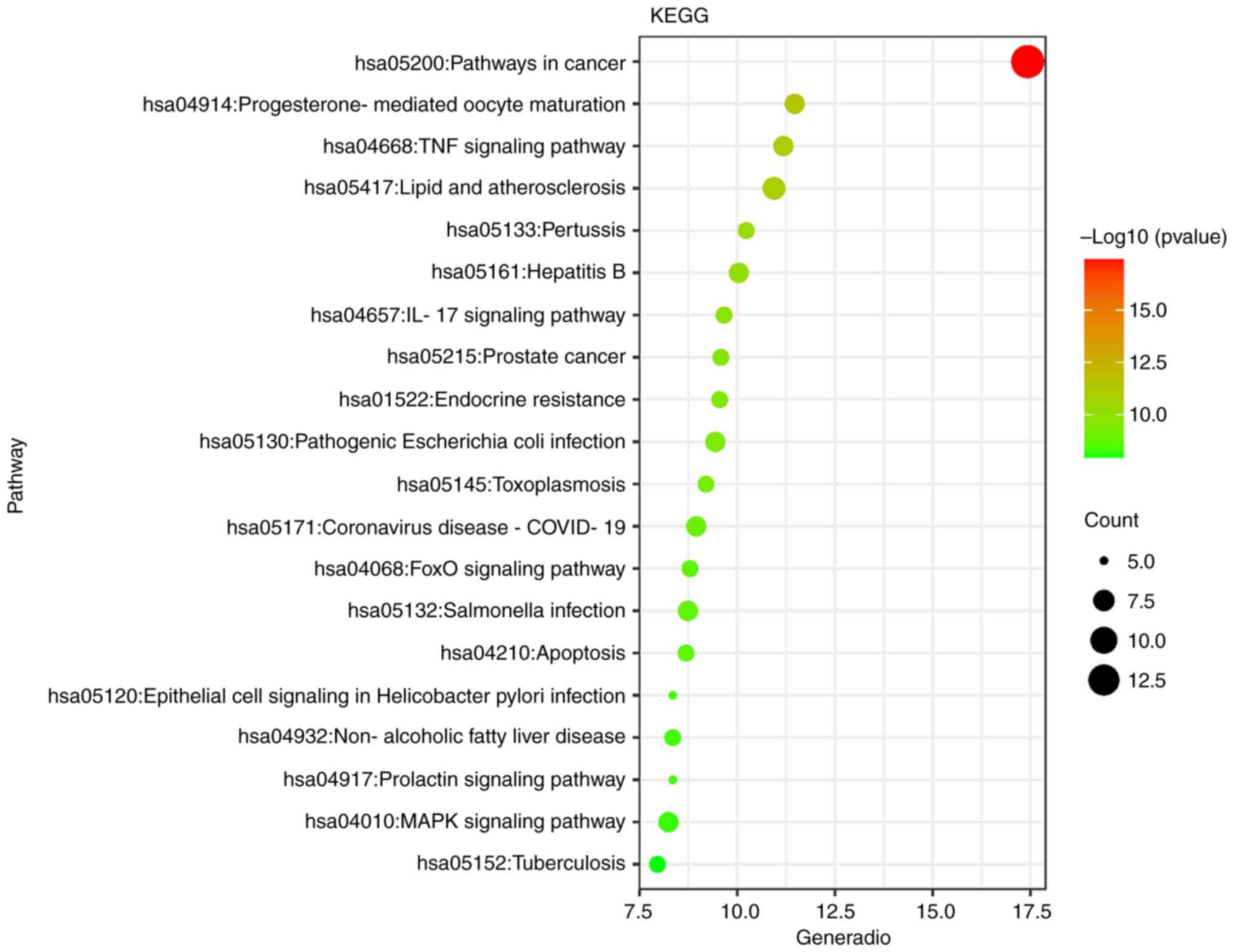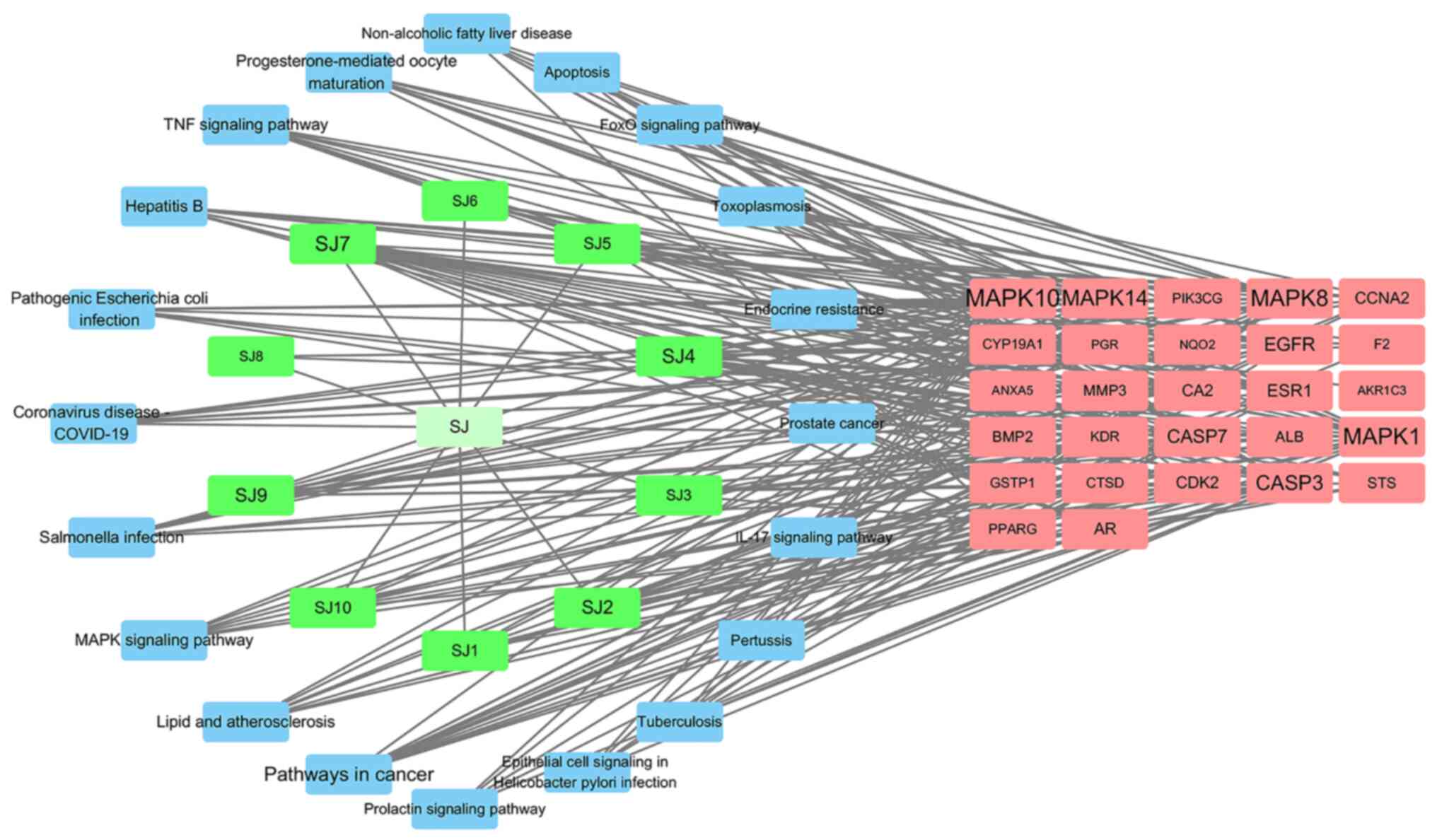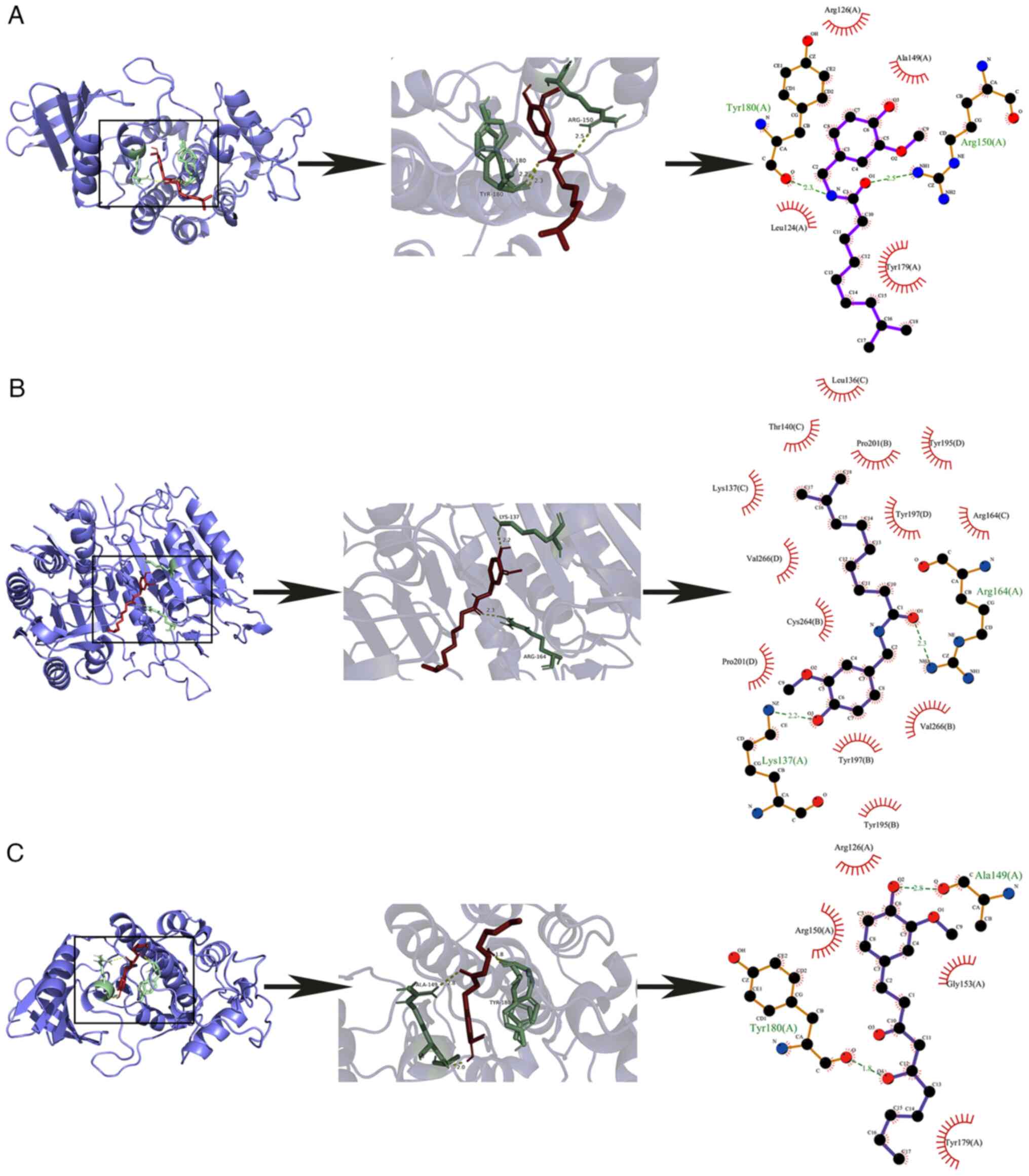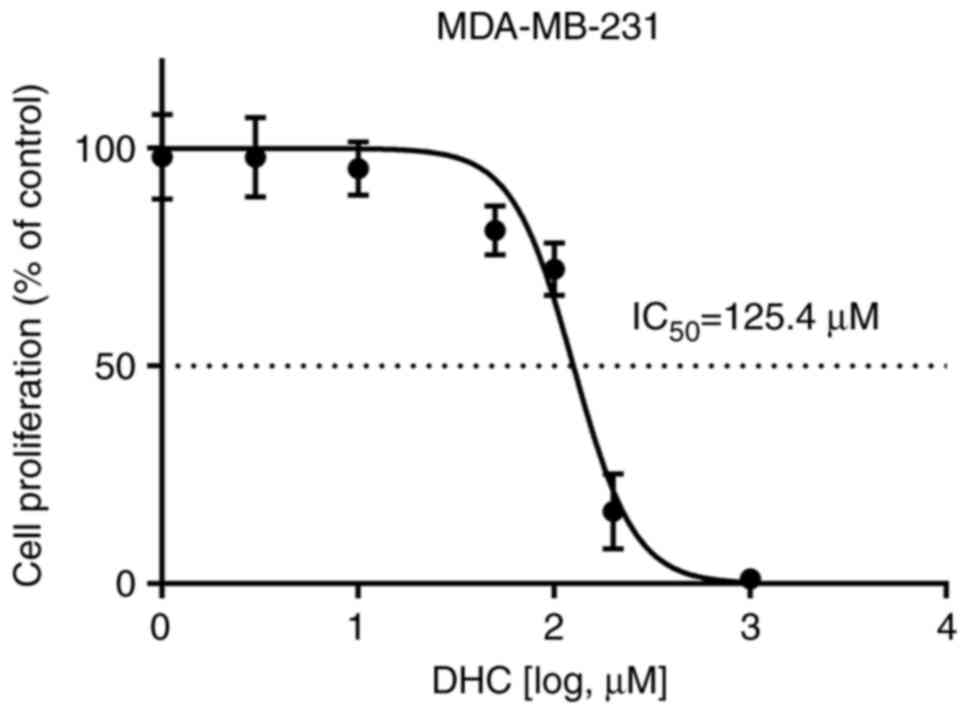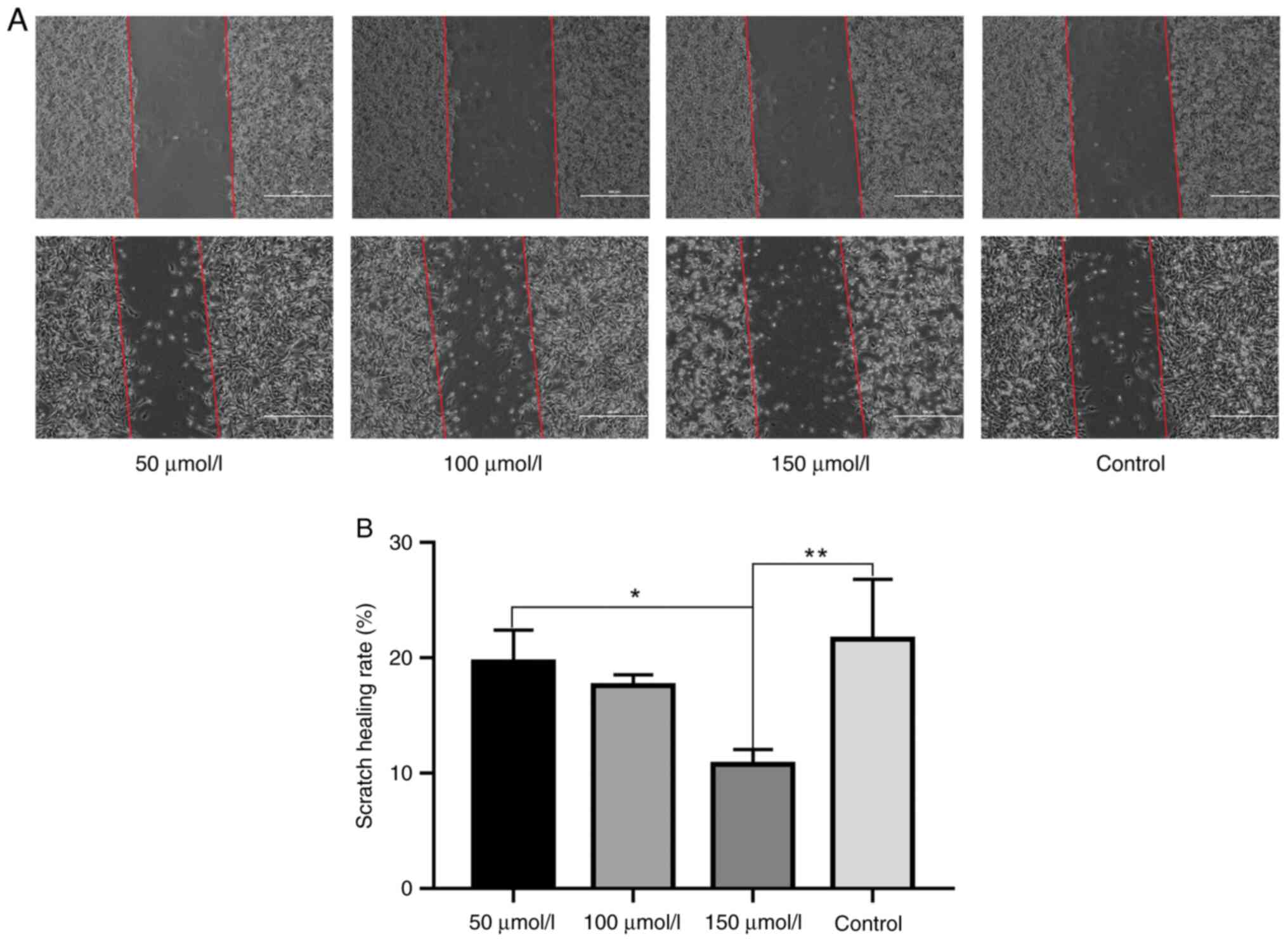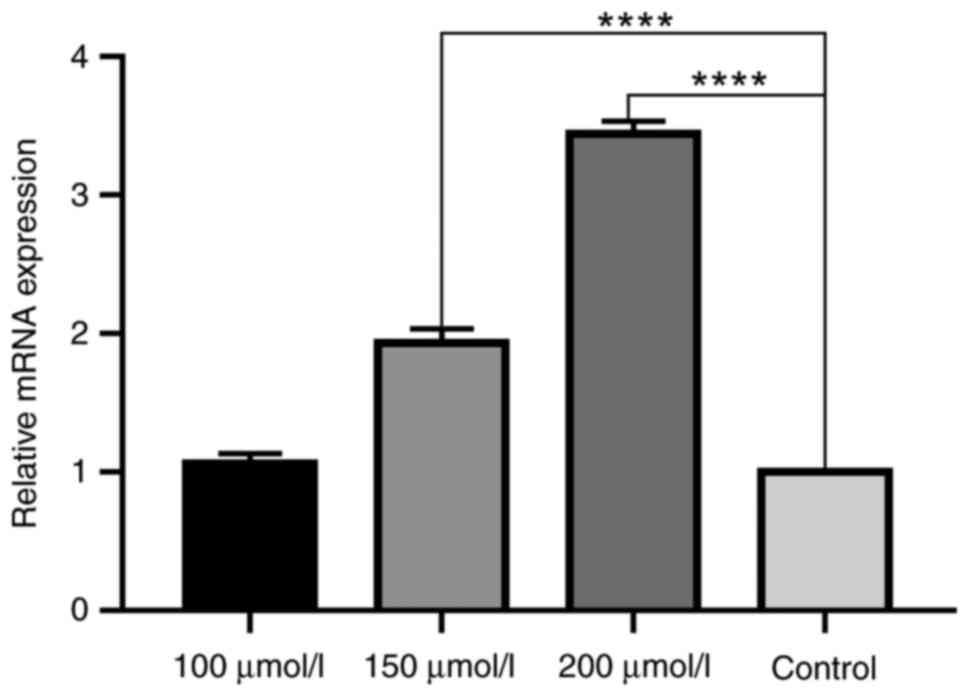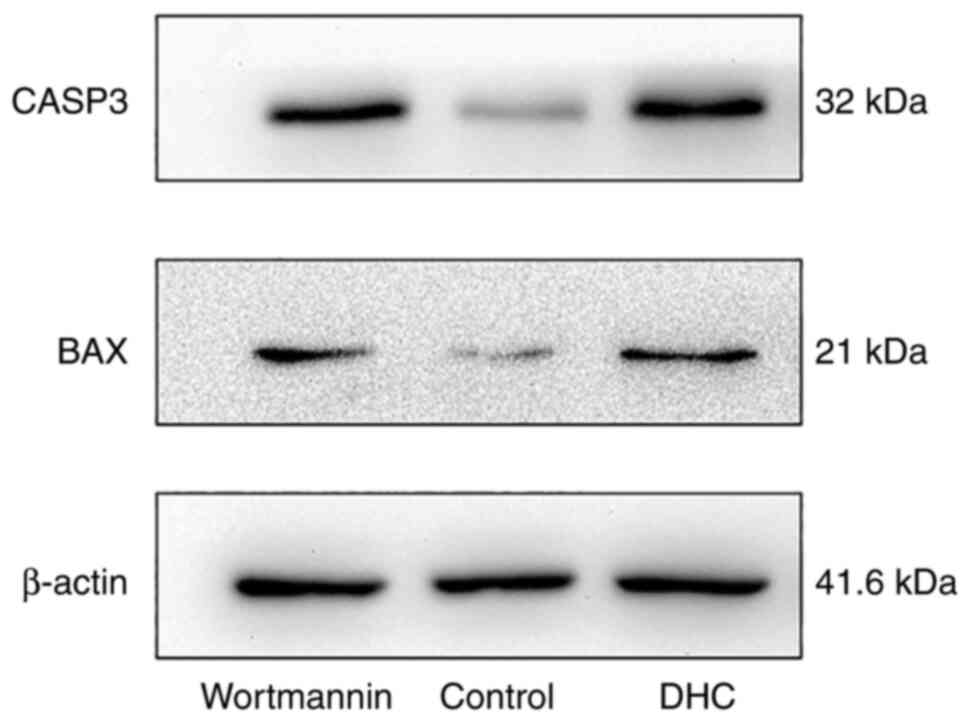|
1
|
Waks AG and Winer EP: Breast cancer
treatment: A review. JAMA. 321:288–300. 2019. View Article : Google Scholar : PubMed/NCBI
|
|
2
|
Lehmann BD, Bauer JA, Chen X, Sanders ME,
Chakravarthy AB, Shyr Y and Pietenpol JA: Identification of human
triple-negative breast cancer subtypes and preclinical models for
selection of targeted therapies. J Clin Invest. 121:2750–2767.
2011. View
Article : Google Scholar : PubMed/NCBI
|
|
3
|
Burstein MD, Tsimelzon A, Poage GM,
Covington KR, Contreras A, Fuqua SA, Savage MI, Osborne CK,
Hilsenbeck SG, Chang JC, et al: Comprehensive genomic analysis
identifies novel subtypes and targets of triple-negative breast
cancer. Clin Cancer Res. 21:1688–1698. 2015. View Article : Google Scholar : PubMed/NCBI
|
|
4
|
Sharma P: Biology and management of
patients with triple-negative breast cancer. Oncologist.
21:1050–1062. 2016. View Article : Google Scholar : PubMed/NCBI
|
|
5
|
Qiu J, Xue X, Hu C, Xu H, Kou D, Li R and
Li M: Comparison of clinicopathological features and prognosis in
triple-negative and non-triple negative breast cancer. J Cancer.
7:167–173. 2016. View Article : Google Scholar : PubMed/NCBI
|
|
6
|
Guo J, Jiang S, Wang Y, Fan J, Liu X, Yan
L, Wang Z, Kuang YH, Wang DQ and Luo W: Herbal textual research and
quality evaluation of ginger in classical prescriptions. Chin J Exp
Formulaol. 28:27–37. 2022.
|
|
7
|
He P and Zhong L: Research progress of
dried ginger, ginger and ginger juice. Chin J Exp Formulaol.
22:219–223. 2016.
|
|
8
|
Qi XG, Xiang H, Hao J, Yang P, Xing X and
Yang X: Mechanism of curcumin inhibiting proliferation and invasion
of breast cancer cells. Chin J Cancer Prev Treat. 25:1211–1216.
2018.
|
|
9
|
Prasad S and Tyagi AK: Ginger and its
constituents: Role in prevention and treatment of gastrointestinal
cancer. Gastroenterol Res Pract. 2015:1429792015. View Article : Google Scholar : PubMed/NCBI
|
|
10
|
Semwal RB, Semwal DK, Combrinck S and
Viljoen AM: Gingerols and shogaols: Important nutraceutical
principles from ginger. Phytochemistry. 117:554–568. 2015.
View Article : Google Scholar : PubMed/NCBI
|
|
11
|
Mahomoodally MF, Aumeeruddy MZ, Rengasamy
KRR, Roshan S, Hammad S, Pandohee J, Hu X and Zengin G: Ginger and
its active compounds in cancer therapy: From folk uses to
nano-therapeutic applications. Semin Cancer Biol. 69:140–149. 2021.
View Article : Google Scholar : PubMed/NCBI
|
|
12
|
Liang Y, Wu G, Luo T, Xie H, Zuo Q, Huang
P, Li H, Chen L, Lu H and Chen Q: 10-gingerol enhances the effect
of taxol in triple-negative breast cancer via targeting ADRB2
signaling. Drug Des Devel Ther. 17:129–142. 2023. View Article : Google Scholar : PubMed/NCBI
|
|
13
|
Rastogi N, Duggal S, Singh SK, Porwal K,
Srivastava VK, Maurya R, Bhatt ML and Mishra DP: Proteasome
inhibition mediates p53 reactivation and anti-cancer activity of
6-gingerol in cervical cancer cells. Oncotarget. 6:43310–43325.
2015. View Article : Google Scholar : PubMed/NCBI
|
|
14
|
Luo Y, Chen X, Luo L, Zhang Q, Gao C,
Zhuang X, Yuan S and Qiao T: [6]-Gingerol enhances the
radiosensitivity of gastric cancer via G2/M phase arrest and
apoptosis induction. Oncol Rep. 39:2252–2260. 2018.PubMed/NCBI
|
|
15
|
Jagetia GC, Baliga MS, Venkatesh P and
Ulloor JN: Influence of ginger rhizome (Zingiber officinale Rosc)
on survival, glutathione and lipid peroxidation in mice after
whole-body exposure to gamma radiation. Radiat Res. 160:584–592.
2003. View
Article : Google Scholar : PubMed/NCBI
|
|
16
|
Ru J, Li P, Wang J, Zhou W, Li B, Huang C,
Li P, Guo Z, Tao W, Yang Y, et al: TCMSP: A database of systems
pharmacology for drug discovery from herbal medicines. J
Cheminformatics. 6:132014. View Article : Google Scholar : PubMed/NCBI
|
|
17
|
Liu Z, Guo F, Wang Y, Li C, Zhang X, Li H,
Diao L, Gu J, Wang W, Li D and He F: BATMAN-TCM: A bioinformatics
analysis tool for molecular mechANism of traditional Chinese
medicine. Sci Rep. 6:211462016. View Article : Google Scholar : PubMed/NCBI
|
|
18
|
Fang S, Dong L, Liu L, Guo J, Zhao L,
Zhang J, Bu D, Liu X, Huo P, Cao W, et al: HERB: A high-throughput
experiment- and reference-guided database of traditional Chinese
medicine. Nucleic Acids Res. 49:D1197–D1206. 2021. View Article : Google Scholar : PubMed/NCBI
|
|
19
|
Daina A, Michielin O and Zoete V:
SwissADME: A free web tool to evaluate pharmacokinetics,
drug-likeness and medicinal chemistry friendliness of small
molecules. Sci Rep. 7:427172017. View Article : Google Scholar : PubMed/NCBI
|
|
20
|
Wang X, Shen Y, Wang S, Li S, Zhang W, Liu
X, Lai L, Pei J and Li H: PharmMapper 2017 update: A web server for
potential drug target identification with a comprehensive target
pharmacophore database. Nucleic Acids Res. 45:W356–W360. 2017.
View Article : Google Scholar : PubMed/NCBI
|
|
21
|
Anders CK and Carey LA: Biology,
metastatic patterns, and treatment of patients with triple-negative
breast cancer. Clin Breast Cancer. 9 Suppl 2 (Suppl 2):S73–S81.
2009. View Article : Google Scholar : PubMed/NCBI
|
|
22
|
Hsin KY, Ghosh S and Kitano H: Combining
machine learning systems and multiple docking simulation packages
to improve docking prediction reliability for network pharmacology.
PLoS One. 8:e839222013. View Article : Google Scholar : PubMed/NCBI
|
|
23
|
Khan SA and Lee TKW: Investigations of
nitazoxanide molecular targets and pathways for the treatment of
hepatocellular carcinoma using network pharmacology and molecular
docking. Front Pharmacol. 13:9681482022. View Article : Google Scholar : PubMed/NCBI
|
|
24
|
Saraswati S, Alhaider A, Abdelgadir AM,
Tanwer P and Korashy HM: Phloretin attenuates STAT-3 activity and
overcomes sorafenib resistance targeting SHP-1-mediated inhibition
of STAT3 and Akt/VEGFR2 pathway in hepatocellular carcinoma. Cell
Commun Signal. 17:1272019. View Article : Google Scholar : PubMed/NCBI
|
|
25
|
Siegel RL, Miller KD, Fuchs HE and Jemal
A: Cancer statistics, 2022. CA Cancer J Clin. 72:7–33. 2022.
View Article : Google Scholar : PubMed/NCBI
|
|
26
|
Nielsen TO, Hsu FD, Jensen K, Cheang M,
Karaca G, Hu Z, Hernandez-Boussard T, Livasy C, Cowan D, Dressler
L, et al: Immunohistochemical and clinical characterization of the
basal-like subtype of invasive breast carcinoma. Clin Cancer Res.
10:5367–5374. 2004. View Article : Google Scholar : PubMed/NCBI
|
|
27
|
Foulkes WD, Smith IE and Reis-Filho JS:
Triple-negative breast cancer. N Engl J Med. 363:1938–1948. 2010.
View Article : Google Scholar : PubMed/NCBI
|
|
28
|
Dent R, Trudeau M, Pritchard KI, Hanna WM,
Kahn HK, Sawka CA, Lickley LA, Rawlinson E, Sun P and Narod SA:
Triple-negative breast cancer: Clinical features and patterns of
recurrence. Clin Cancer Res. 13:4429–4434. 2007. View Article : Google Scholar : PubMed/NCBI
|
|
29
|
Carey LA, Dees EC, Sawyer L, Gatti L,
Moore DT, Collichio F, Ollila DW, Sartor CI, Graham ML and Perou
CM: The triple negative paradox: Primary tumor chemosensitivity of
breast cancer subtypes. Clin Cancer Res. 13:2329–2334. 2007.
View Article : Google Scholar : PubMed/NCBI
|
|
30
|
Classic on Medical Problems. Beijing:
People's Health Publishing House; 2013
|
|
31
|
Yuanfang C: Nest Cube. On the etiology of
diseases Beijing: People's Health Publishing House; 1983
|
|
32
|
Lei D and Liu Z: Research progress on
anti-tumor effect of traditional Chinese medicine for warming
middle and dispelling cold. Shi Zhenguo Medicine. 32:170–173.
2021.
|
|
33
|
Zhou L, Qi L, Jiang L, Zhou P, Ma J, Xu X
and Li P: Antitumor activity of gemcitabine can be potentiated in
pancreatic cancer through modulation of TLR4/NF-κB signaling by
6-shogaol. AAPS J. 16:246–257. 2014. View Article : Google Scholar : PubMed/NCBI
|
|
34
|
Kaewtunjai N, Wongpoomchai R, Imsumran A,
Pompimon W, Athipornchai A, Suksamrarn A, Lee TR and
Tuntiwechapikul W: Ginger extract promotes telomere shortening and
cellular senescence in A549 lung cancer cells. ACS Omega.
3:18572–18581. 2018. View Article : Google Scholar : PubMed/NCBI
|
|
35
|
Zanesco-Fontes I, Silva ACL, da Silva PB,
Duarte JL, Di Filippo LD, Chorilli M, Cominetti MR and Martin ACBM:
[10]-Gingerol-loaded nanoemulsion and its biological effects on
triple-negative breast cancer cells. AAPS PharmSciTech. 22:1572021.
View Article : Google Scholar : PubMed/NCBI
|
|
36
|
Luna-Dulcey L, Almada da Silva J,
Jimenez-Renard V, Caleiras E, Mouron S, Quintela-Fandino M and
Cominetti MR: [6]-Gingerol-derived semi-synthetic compound SSi6
inhibits tumor growth and metastatic dissemination in
triple-negative breast cancer xenograft models. Cancers (Basel).
13:28552021. View Article : Google Scholar : PubMed/NCBI
|















